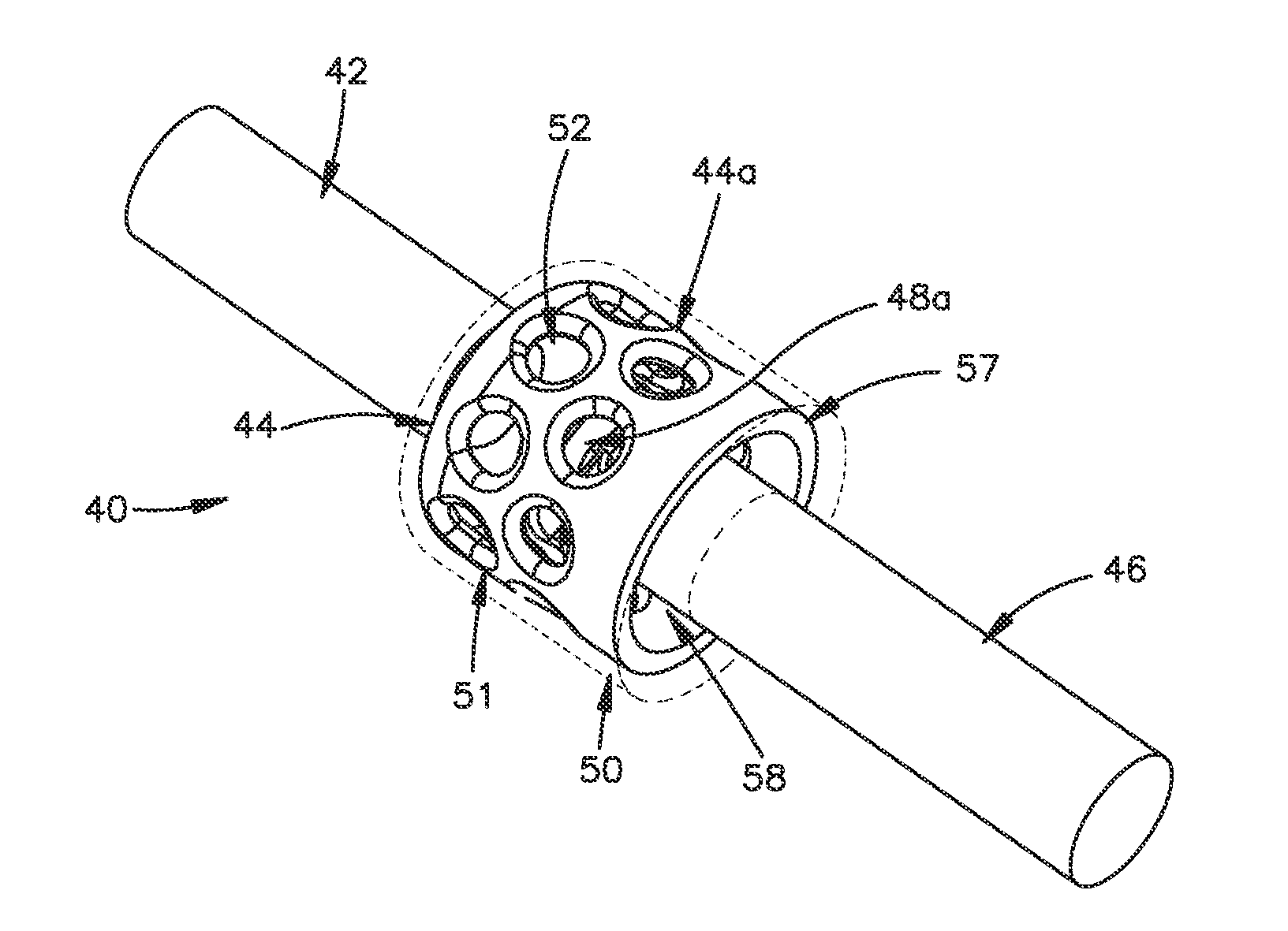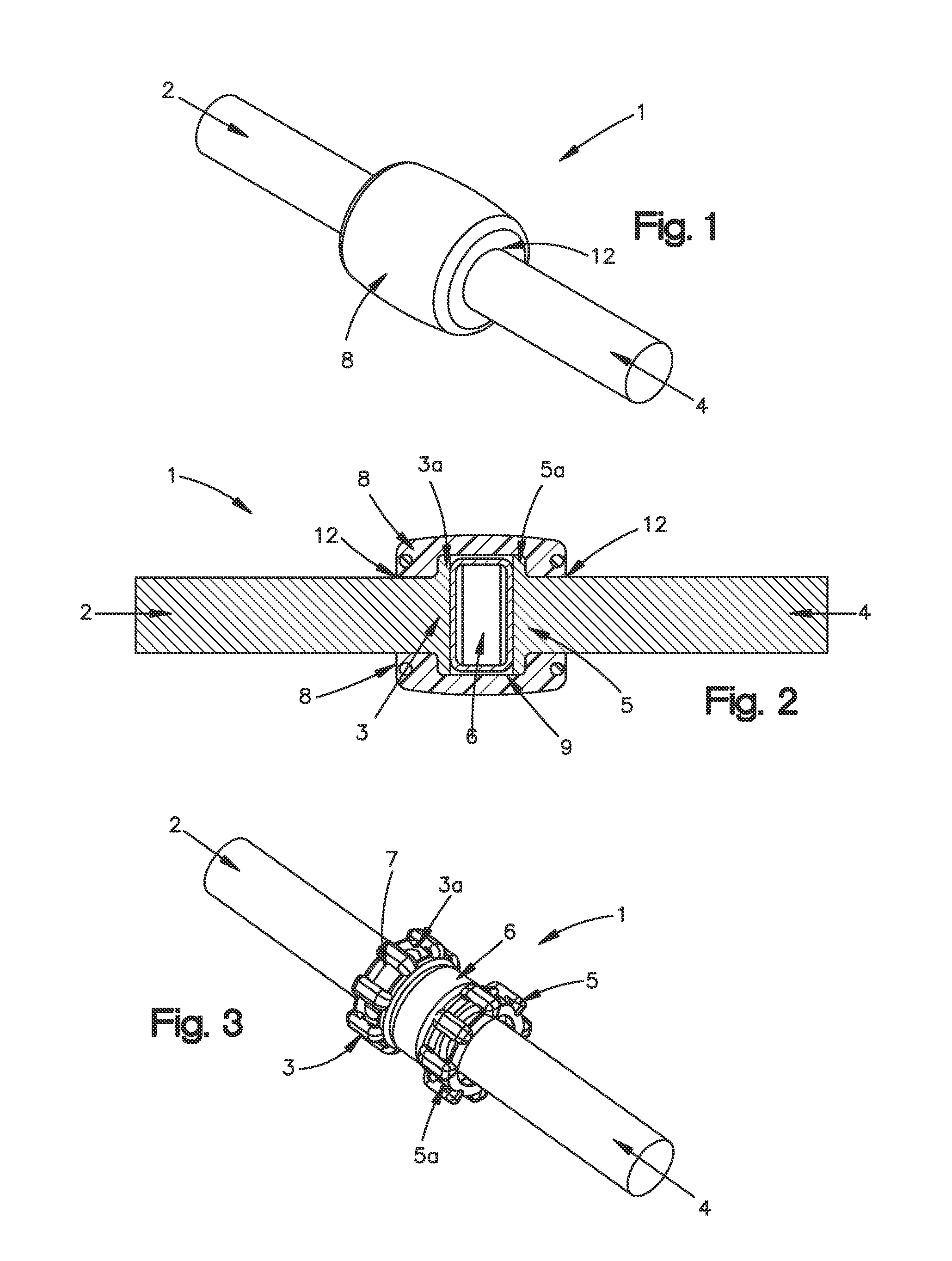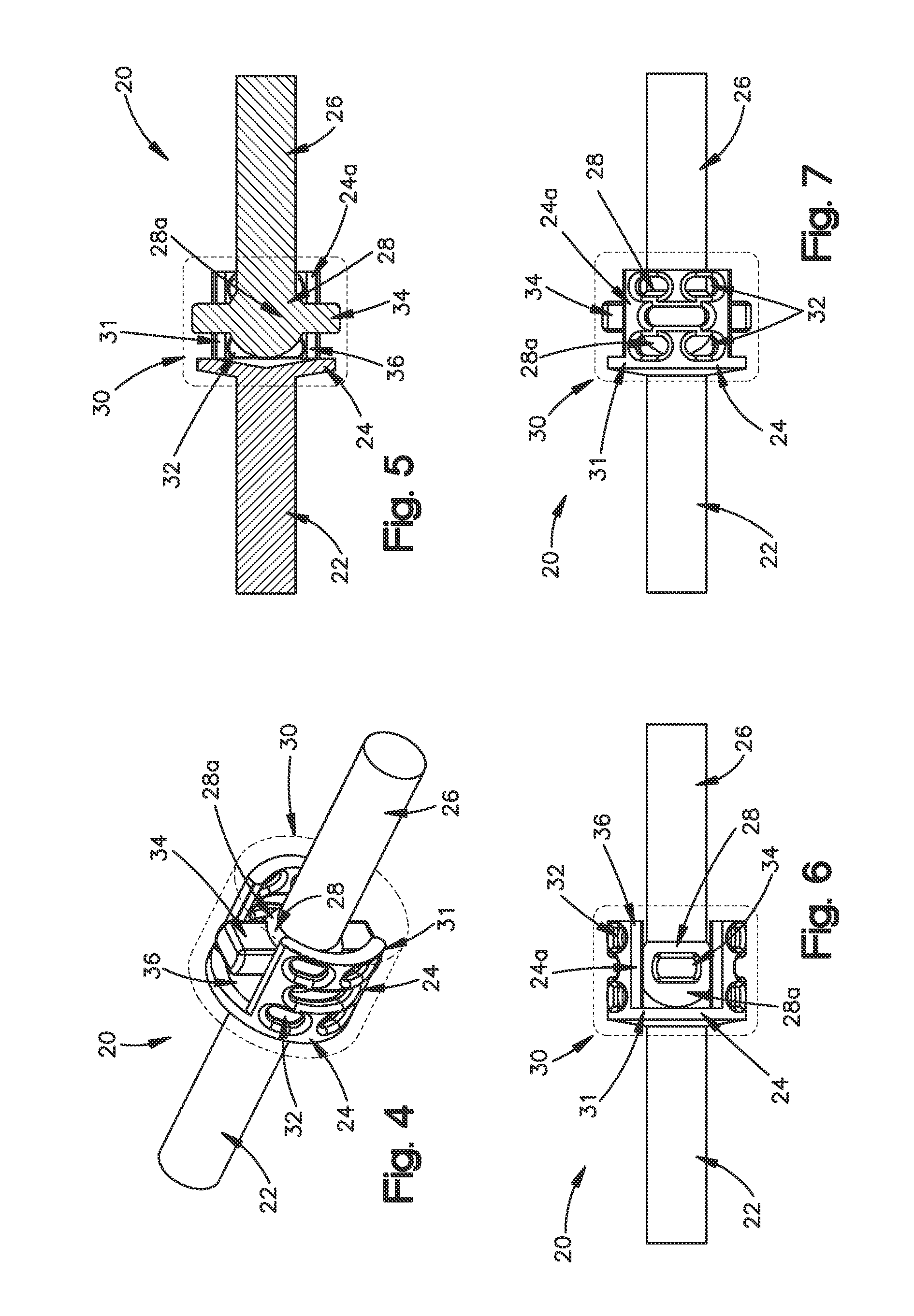Dynamic fixation system
a dynamic fixation system and dynamic technology, applied in the field of dynamic spinal fixation system, can solve the problems of inability instabilities of the motion segments of the spine, and the rods of the existing dynamic fixation system generally lack the strength and/or constraints to overcome expected shear stress, etc., to achieve the effect of facilitating movemen
- Summary
- Abstract
- Description
- Claims
- Application Information
AI Technical Summary
Benefits of technology
Problems solved by technology
Method used
Image
Examples
Embodiment Construction
[0071]Certain exemplary embodiments of the invention will now be described with reference to the drawings. In general, such embodiments relate to a fixation system, by way of non-limiting example, a dynamic fixation system for use in posterior spinal fixation. The invention may have other applications and uses and should not be limited to the structure or use described and illustrated. As will be described in greater detail below, the dynamic fixation system may include a first rod, a second rod, and a damping mechanism and / or damping component positioned between and / or connecting the first and second rods. The damping mechanism and / or damping component permits the first rod to move (e.g., translate, angulate, rotate (e.g. twist), etc.) with respect to the second rod.
[0072]The dynamic fixation system including but not limited to the first and second rods, the optional housing, cage, end portions, tabs, locking caps, spring elements, sleeves, damping mechanism, damper, etc., may be m...
PUM
 Login to View More
Login to View More Abstract
Description
Claims
Application Information
 Login to View More
Login to View More - R&D
- Intellectual Property
- Life Sciences
- Materials
- Tech Scout
- Unparalleled Data Quality
- Higher Quality Content
- 60% Fewer Hallucinations
Browse by: Latest US Patents, China's latest patents, Technical Efficacy Thesaurus, Application Domain, Technology Topic, Popular Technical Reports.
© 2025 PatSnap. All rights reserved.Legal|Privacy policy|Modern Slavery Act Transparency Statement|Sitemap|About US| Contact US: help@patsnap.com



